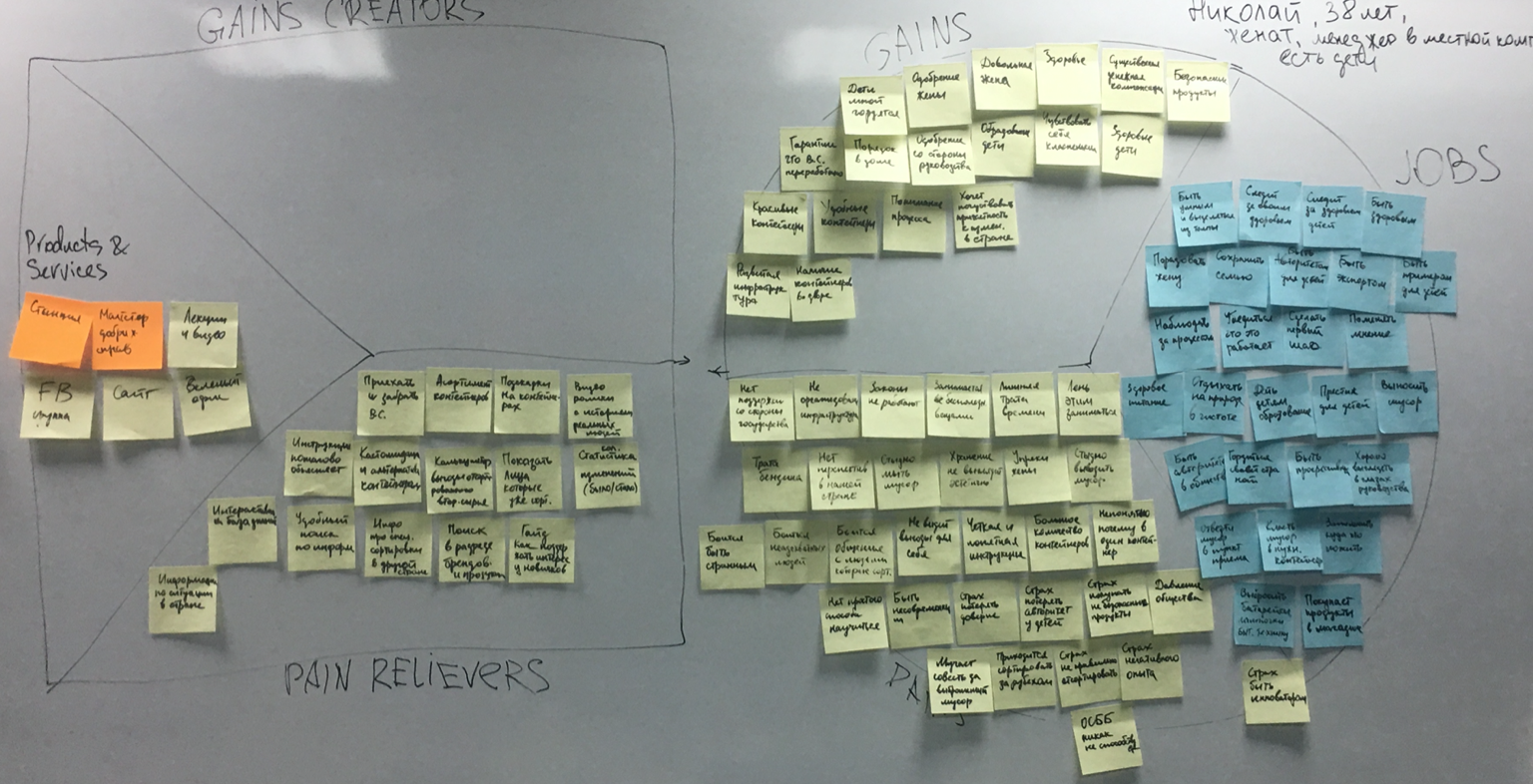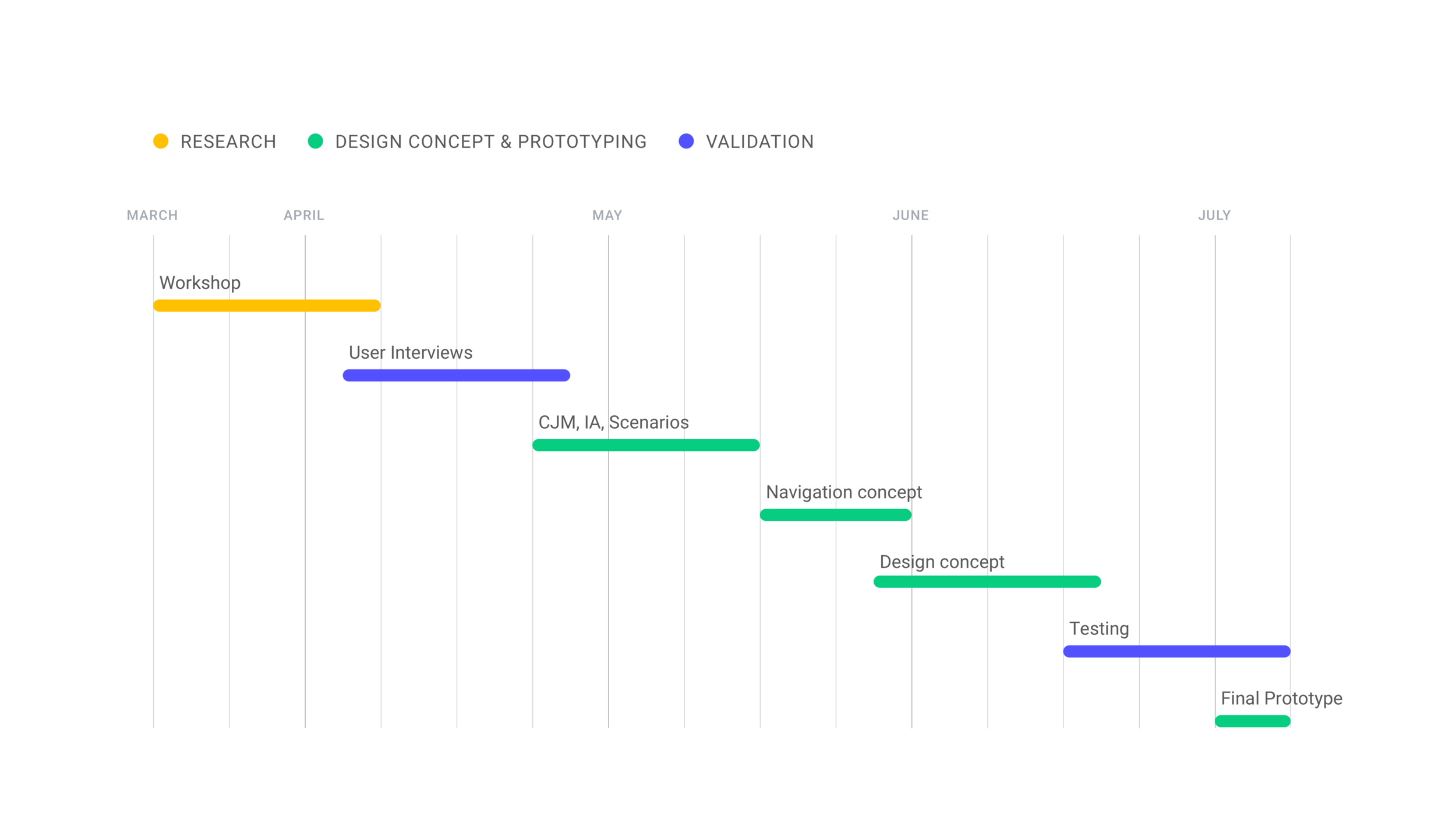More Convenient Recycling Experience
Ukrayina Bez Smittya
Recycling and Ecology (Social/Non-profit)
Role: Product Designer (end-to-end experience)
Design Team: 4 UX designers
Release Date: August 2018
Client's Story
Eco-project Ukrayina Bez Smittya is an all-Ukrainian independent organization that promotes and implements sustainable waste management models. They are fighting for implementing new technologies and procedures, an appropriate future for Ukrainians within renovation and saving the environment.
The main points of action for this organization are:
build a friendly and convenient network of public sorting stations
create a culture of responsible product consumption
gather people, business and government to implement state-level changes
decrease landfill amounts in Ukraine
Discovery Workshop
When we get acquainted with a story about how the organization was found and how much founders care about the world around them, we began to dive deeper into the current situation in the country and our city particularly (Kyiv, Ukraine). Unfortunately, we found out that there is poor wasting management in general, so there are a lot of things that require attention and improvements.
During our workshop sessions with the client, we decided that we will focus on raising people’s awareness and grow a community of individuals who care about ecology. For the current communication purposes, they were using a Facebook page and a simple website with a misleading structure, where small team had barely time to post latest updates. As our target audience was young and progressive people and most issues at this point were addressed through Facebook, we thought about creating a mobile app.
Therefore, to make any changes or adjustments we needed to learn about the whole process of how people deal with recycling from start to end.
Trends and project goal
Spreading the idea of conscious consumption
Bloggers and other opinion leaders are interested in and spread the idea of conscious consumption - the rejection of disposable packaging (cups, food boxes, shopping bags), the purchase of products that are better suited for processing.
Initiatives to create communities and organizations
Promoting the problem of sorting, creating communities and organizations that help ordinary people and companies to sort properly.
Develop infrastructure for collecting and sorting recyclables at the state level.
Make recycling simple and accessible for people.
Discovery
Competitors:
Partners:
Existing channel:
http://nowaste.com.ua https://www.facebook.com/NowasteUkraine
Audience & Research
During the series of user interviews, we were trying to confirm or refute our assumptions regarding their user journey, so we can see what actually face the average user.
It turned out we were wrong about the main pain points.
Regarding recycling stations — increasing its amount was not the case for business at this point, so we concentrate on making it easier to find any station within the city. And the knowledge part supports our idea of having a centralized knowledgebase in a mobile app.
And the most important insight — there was no second persona! We figured out that no matter how high is consumer’s motivation they still go through the same journey. And those who were less motivated just had an unsuccessful path on earlier steps.
#1
Young people, who are interested in recycling or are already doing it at home.
#2
Young people, who are skeptical and not interested in recycling.
Data Transformation
Although, after completing user interviews and gathering all the data we split the process into 3 main steps and create a detailed customer journey map.
It has a direct influence on our navigation — the main goal for each step matched the global navigation section. Let’s take a closer look.
Step 1: Preparing — Catalog
On this step people willing to discover information about different types of packaging and its ability to be recycled, so we created a massive catalog where people can search for information by material, type of packaging, and even brand. Also, all information was co-linked. For example, if you are looking for how to recycle a Coca-Cola plastic bottle you can also discover about types of plastic and what other packages are produced from it.
Step 2: Sorting — Guide and Calculator
On the second stage people actually dealing with sorting itself, so we made a simple step-by-step guide on how to prepare and keep all garbage separately (even at small apartments). Although litter storage was not a big problem for users, so we’ve decided to help them make it handier anyway. As a concept, we have created a calculator for optimizing storage space depending on apartment size.
Step 3: Utilization — Interactive Map
The last step seems the most challenging and important for our audience. There were a number of problems and it was the most common spot where people used to drop off from the path. Clear communication between users and different stations is crucially important in this case, so we tried to make it as transparent as possible. Having a database with all available recycling stations in the town seems the most obvious solution, including all contact information and actual work schedule.
Key Feature
Ukraina Bez Smittya is providing the unique service — A Good Man Service — it like a taxi for composed litter. As mentioned, there is a lack of sorting stations in Kyiv and it’s pretty hard to get to it. So there is a guy who drives through the city and can pick up your litter and bring it to the station. We integrated the schedule and route into the application, so people can easily track when it will be at some particular point and be able to plan their journey ahead.
Another concept feature and service — volunteers. For those who want to help each other with recycling and delivering waste, there is a list of volunteers. People are able to contact any person from this list so they can pick up sorted garbage and bring it to the station.
Verifying Results
When we run usability testings it has shown us remarkable results and we got a lot of positive feedback about the product. Based on it we also made a few improvements, such as changing Information Architecture by grouping some categories in the catalog and improving visibility of particular features by changing icon for CTA. Overall, people were really excited to start using this product.











